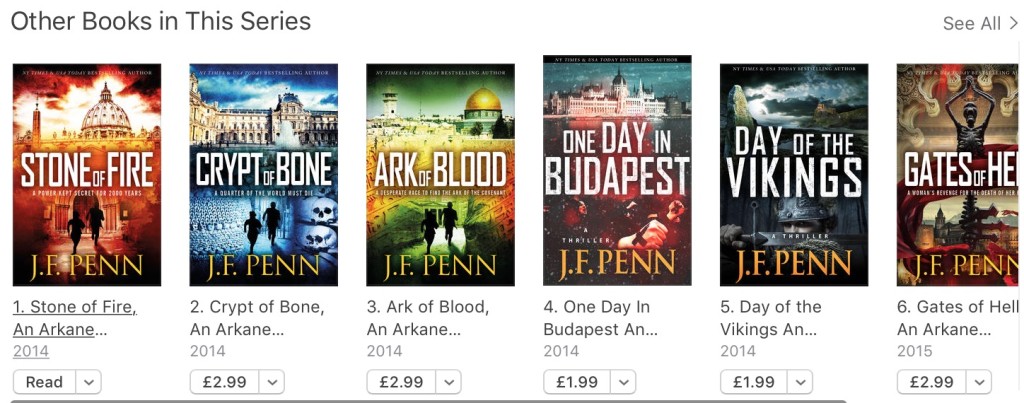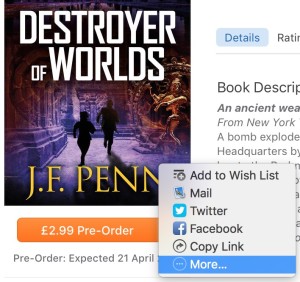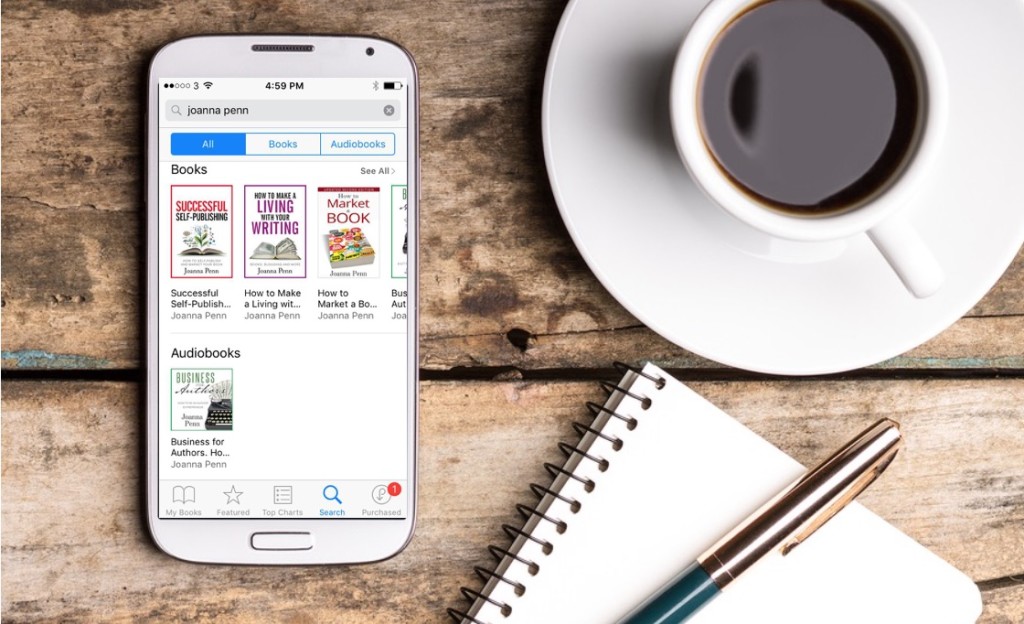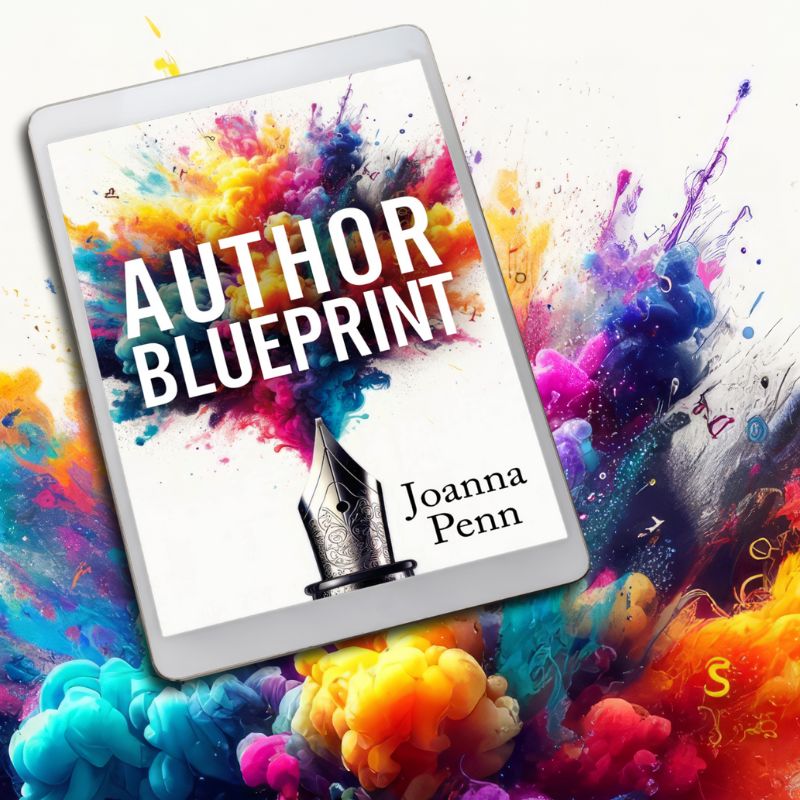OLD POST ALERT! This is an older post and although you might find some useful tips, any technical or publishing information is likely to be out of date. Please click on Start Here on the menu bar above to find links to my most useful articles, videos and podcast. Thanks and happy writing! – Joanna Penn
If you're a new author with one or two books, then it can make sense to go exclusive with KDP Select, because you're building your backlist and getting to grips with everything that goes into being an indie. (More on the pros and cons of exclusivity here).

I make an increasing percentage of my author income from Kobo and iBooks, and of that money, an increasing amount is from non-US sales.
And some authors even make more money from iBooks than they do from Amazon, for example, Liliana Hart, interviewed here.
You can publish direct on iBooks if you're a Mac user, or you can take advantage of all the same opportunities by publishing through Draft2Digital or Smashwords.
So if you're ready to go wide, or if you want to expand your sales, here's how to sell more books on iBooks.
 (1) Write in a series and use a permafree series starter
(1) Write in a series and use a permafree series starter
iBooks has specific promotions for free first in series and iBooks readers are used to using them as a way into a new author's books.
iBooks readers are also less price sensitive because there is no subscription model, so even if you give the first away as a free starter, you can still put the rest at full price.
There's also no $9.99 cap on royalties so you can sell higher priced boxsets. Again, iBooks readers are used to these as they're offered by traditional publishing at pretty high prices e.g. George RR Martin 5 book boxset at $34.99.
When publishing, you can use a series field to link all the books together, so make sure you spell your series name and author name consistently to take advantage of that. If you publish direct to iBooks, you also get more choices for categories which can aid discoverability.
(2) Use pre-orders and promote them to your readers

Obviously, you should aim to meet your pre-order date but there's no penalty for changing the date if you need more time, or even if you deliver it early.
Pre-orders on iBooks also rank twice.
They're counted in the iBooks bestseller lists while on pre-order and then you get the sales counted all on the live date. Awesome!
As someone who has only just started to get serious about pre-orders, I can tell you that it does make a difference over time. Yes, you have to be more militant about planning in advance, but it helps to keep to the production schedule and customers know what to expect next. My next book, Destroyer of Worlds, is currently on pre-order at iBooks and I'll have the next book in the series up by the time it goes live on 21 April 2016.
(3) Do a cover reveal and early sample while the book is on pre-order
You can drive customers to the pre-order by revealing aspects during the journey to publication.
Start with just a title and no cover a year in advance, then do a cover reveal a few months out and then use an early sample of first two chapters. This gives you three chances to promote the pre-order, plus if it's a series, it will be linked on the iBooks page.
 (4) Link directly to the iBooks store as you promote your books
(4) Link directly to the iBooks store as you promote your books
Some authors complain that they don't sell any books on iBooks, but when I look at their website and social media presence, there's no evidence of them actually promoting their books there.
Add iBooks links and buttons to individual book pages so visitors to your website will click through to buy. (For specific examples, check out How to Make a Living with Your Writing, and Stone of Fire).
You can also share directly from iBooks to social media. The link to Twitter 
(5) Use promo codes for reviewers
You can get promo codes that enable you to give your books away for free to reviewers or people on your mailing list.
This helps give your book social proof and iBooks, like all stores, has algorithms that help discovery for books with more reviews and more ‘traffic.' Everything helps!
 (6) Think mobile for marketing
(6) Think mobile for marketing
iBooks is now the default reading app on all Apple devices. There are also in-app purchases, unlike Amazon's Kindle app, which makes it easier to buy with a click.
Share direct links to the iBooks store when you tweet or update a Facebook status and readers who are browsing on mobile will be able to click and buy immediately.
iBooks is also keen on image marketing so make sure you include great images in your marketing. Don't be tied to just your cover. Think about the themes, people, places and quotes that might arouse interest in your book and use those in your advertising.
 (7) Optimize your chances for discovery by merchandising
(7) Optimize your chances for discovery by merchandising
iBooks merchandising is done by team members all over the world who love books and actively look for authors and books to feature for promotions. You're more likely to be noticed if:
- You have a number of well-written books with great looking covers and social proof through reviews.
- You utilize the best practices as above and demonstrate that you're actively promoting your books on iBooks.
- You avoid bouncing in and out of iBooks as you choose to go in and out of KDP Select. Every time you pull your books, you damage your velocity at the other stores.
- You seek out iBooks reps at author events and develop relationships over time by demonstrating you are focusing on iBooks.
You can find more on marketing your books on iBooks here.
Do you have any tips for selling more books on iBooks? Please leave a comment below and join the conversation.

 (4) Link directly to the iBooks store as you promote your books
(4) Link directly to the iBooks store as you promote your books
 (7) Optimize your chances for discovery by merchandising
(7) Optimize your chances for discovery by merchandising

Thanks for this great article, Joanna.
“You can publish direct on iBooks if you’re a Mac user, or you can take advantage of all the same opportunities by publishing through Draft2Digital or Smashwords.”
I’m a mac user. I thought only US residents could publish direct on iBooks. I use Smashwords, but always seem to have to communicate at arms length with iBooks through Smashwords. Am I missing something – a method of publishing and communicating with iBooks and an untapped marketing opportunity?
No, I publish direct and I’m in the UK – you have to use iTunes Connect and iTunes Producer (downloaded to your Mac) so the process is a little painful, but I think it’s worth it for the extra metadata.
Thanks, Joanna.
1. Will this work for me in Ireland or is only available in the UK?
2. What do you mean by ‘extra metadata’?
JJ
It works wherever you are as far as I know 🙂 and by extra metadata, I mean that there are unlimited category choices when going direct to iBooks
Great tips, Joanna. iBooks is the sleeping giant of the industry; I wish Apple would open the platform up to indies more easily and allow better control of metadata. Having said that, they probably don’t want the iBooks Store to ever become overrun by IMers and scammers in the same way the Kindle platform has.
There is huge opportunity on iBooks. My best-ever earnings on one of my pen names was purely down to iBooks and taking advantage of “free first in series”. The 30-day cliff (7 to 14 days in some genres!) where sales drop off rapidly after release on Kindle doesn’t exist on iBooks, although you need to gain traction in the first place.
iOS has a gigantic, engaged and affluent installed base (and iBooks is also available on Mac). Price sensitivity doesn’t seem to be an issue as you rightly point out, a vital factor if authors want to get people buying their books again instead of relying on less than half-a-cent per page read in KU. Now if only Google would leverage their purchase of Oyster, we might see some serious competition to Amazon developing.
Hi Joanna. A great article on selling more on ibooks. Google Play is also very similar to ibooks and the Play Store app is installed by default in all Android phones. I go to Google Play directly but have heard that they are not accepting any new authors right now. I came across a new aggregator (it looks similar to Draft2digital) called Streetlib. It is based in Italy. Its website is https://www.streetlib.com/ They’ll distribute your books to Google Play and lots of small unknown e-book retailers in Europe. I think it may be a worthwhile idea to check them out. 🙂
Thanks Prasenjeet. I’m not willing to use yet another retailer so I will either go direct with Google Play (once they open up again) or I will wait for D2D to work with them. I struggle with the number of sites to publish on already 🙂 so thanks for the suggestion, but I’ll be leaving that for now!
Thanks for these tips. I believe in taking advantage of every platform available, so I’ve always promoted every vendor. Having said that though, uploading directly to iBooks is an excruciating process, and I say that as someone who is an experienced indie publisher who routinely uploads her own books at Amazon, Kobo, B&N, ARe and Smashwords. I’ve used Macs and various Apple products my entire life and the process of direct uploading to the iBookstore actually sent me back to Smashwords, which is amazing since Smashwords is a PITA itself. I need some clear, direct WRITTEN instructions on this process and can’t seem to find them anywhere.
It is difficult – but basically, go to iTunes Connect and get an account. Then download iTunes Producer and use that to submit the book.
I use Draft2Digital and while 80% of my downloads are via iBooks, that’s only of my permafree title. It hasn’t filtered down to my titles for sale yet! Still, it’s up there as a list building tool, though I’ll have to make more of an effort to link to iBooks, particularly since it’s so prevalent through iPads and iPhones now.
It’s definitely worth pro-actively promoting and also try to connect with the reps over time.
Hi Jo – great article (of course I’d expect no less!) — and it has reminded that I need to get the branded buttons and store links back onto my author website now that I’m out of KDP Select once again and back on iBooks and Kobo etc.
You may recall that I blogged about iBooks discovery a couple of years ago, albeit focusing more narrowly on how to use their widgets page to create sales links etc. It’s really useful to have this post now, as it touches on many aspects that I haven’t – or was vaguely aware of but didn’t include as they didn’t affect me at the time. (Note to self: get on with that series!)
The point about ‘being seen’ to be marketing to the iBooks Store is very important. Also interesting though not surprising to hear that Apple can track who dips in and out of the iBooks store with their titles. I’ve been guilty of this as I try to navigate what is and isn’t effective in the challenging world of children’s book marketing — but with my fifth children’s book due out in May and no huge sign that using KDP Select makes a material difference I now feel ready to spend more time on marketing all of them across all platforms. Hopefully that will also afford me a Bookbub spot at some stage.
The above said (for any children’s authors reading this), by far most of my sales continue to be in print from bookshops and at school events and I would continue to drive home that message to children’s authors. But, then again, *that* said, I think that children’s uptake of ebooks in developing markets is likely to increase as phone ownership increases, so it makes sense to try to be on as many platforms as I can be ready for that — and now that I have a good offering the effort somehow feels more worthwhile.
For any readers here (children’s authors or not) who have the free WordPress blogs, I’ve used a simple workaround that allows me to make use of the iBooks branded book links and banner builders without having to import the iBooks widget’s code (which the free WordPress site won’t allow.) In short, it involves taking a screenshot of the image/button that the Apple Widget creates with your book details, then posting that to your blog with a custom URL that links to the iBooks product page.
Here’s the link – https://kareninglis.wordpress.com/2014/06/30/apple-ibooks-marketing-and-discovery-tips/ – just bear with the fact that the article was written two years ago so the comments at the end are a little old and may not relate exactly to the now updated screenshots!
Onwards… 🙂
Hi, Joanna. Can you explain how one gets the coupon codes to give away ebooks? I’ve been unable to figure that out. Or are they only available to people who upload directly, as opposed to going through D2D? I appreciate any light you can shed on this!
From their help: Open up your iTunes Connect Account.
Then select My Books > Select The book you wish to create the promo tickets for.
On the top right corner the Promo Code Button is there where you can create the promo codes.
For D2D, I’d email their help who are very useful 🙂
Can you giveaway promo codes if your book is on preorder and also can you get promo codes if your book was posted through D2D or smashwords?
You can find info from Apple here: https://itunespartner.apple.com/books/articles/apple-books-promo-codes-2740
You can’t have different prices at these stores. Newbies are getting into all kinds of trouble because they don’t understand that it is unethical to charge ibooks people higher than kindle people, just because they’re ‘used to it’. It is also against Amazon’s (and all the other stores) TOS and they will change their price for your title, to that impossibly higher amount or just yank your book. I suggest charging what YOU would pay for the book if you didn’t know the author. Pricing can be hard, but screwing people because you can isn’t right. You’ll never build a loyal following that way. -just advice from someone who retired before 40 thanks to fiction writing (multiple genres). Be generous with your readers, to a fault. They’ll remember it more than your family will.
I’m not suggesting charging different prices on the same books. I’m suggesting using boxsets to provide iBooks customers with boxsets that you are not even selling on Kindle e.g. 8 books for $14.99 which you can’t sell on Kindle and still get the 70% royalty. I have the same pricing on my individual books and 3 book boxsets everywhere.
Hi Joanna.
To add to this pricing cap conversation. I am releasing a ‘coffee table book’ style ebook called The Gift of a Smile and because it has 90+ full page photos the download fees that Amazon charge me would mean I would be paying people to buy my book. So I have to charge above the 9.99 which means Amazon take 70% of my hard earned money.
At iBooks I can charge the 15.99 this 185 page book is worth and iBooks only take 30%. I have put years of work into this book, photographing the dogs and sharing my transformational knowledge so to have Amazon take 70% of my earnings doesn’t feel right to me. And I feel 15.99 is a bargain for the readers.
So I am sticking with iBooks for now where I feel they look after the author as well as the reader.
Thanks for this article, Joanna. It’s encouraging me to press through with iBooks even though they’re a hassle to publish with! I just jumped through all of the hoops to get one of my books on there and just got an email saying I have to correct the file because I have links on my “Other Books by Barb Raveling” page to Amazon! So back to my ebook formatter again for a new epub file! I love your podcast – so helpful plus you’re so fun to listen to. Thanks for all that you do!
Thank you for this article — it’s one of the clearest I’ve seen on the subject.
One thing that would be very helpful would be a discussion of a straightforward way (besides, say, Fiverr) to find someone who can use iBooks Author to create both an iBook version and an ePub version, on a contract basis. Google searches so far haven’t produced much. My ePub formatter seems to be so overwhelmed with work these days he can’t get to everyone, and I find Calibre and Scrivener more techie than this old brain feels like coping with. I’m going to download iBA and try to learn it, since I’m moderately experienced with Apple products, but would be much happier if I could hire the job out! 😀
You don’t need to use iBooks Author to publish on iBooks. That is more for children’s books or textbooks. You can just use an ePub file through iTunes Producer. I create mine with Vellum.